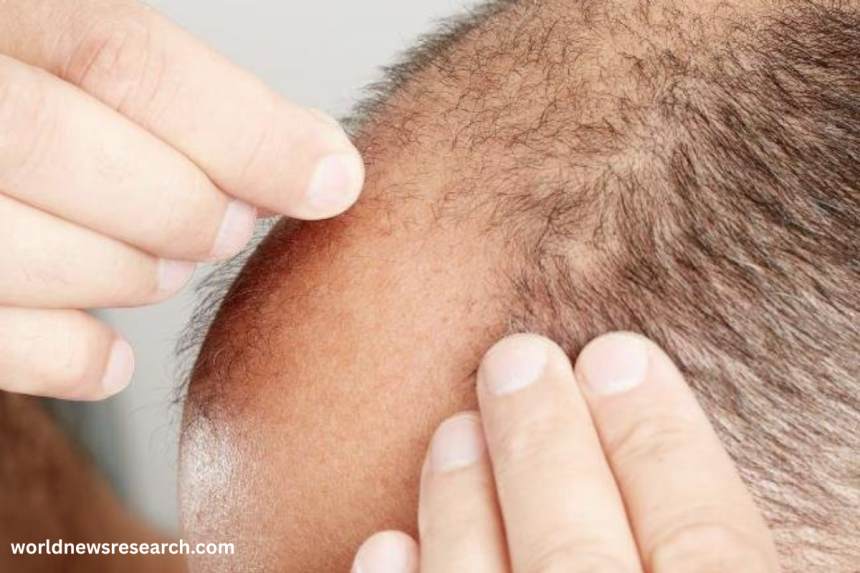The U.S. Food and Drug Administration (FDA) has recently issued a warning regarding finasteride, a commonly prescribed medication for hair loss, especially male pattern baldness. While finasteride has proven effective in preventing hair loss and even promoting hair regrowth, the FDA has raised concerns about its potential side effects, which can affect a significant number of users. This warning is particularly important for individuals considering finasteride as a treatment for hair loss, as it draws attention to both short-term and long-term risks associated with its use.
This article will explore finasteride’s background, its mechanism of action, the side effects associated with its use, and what the FDA’s warning means for patients. Additionally, the article will discuss alternative treatments for hair loss, patient considerations, and how the medical community is responding to the growing concerns surrounding finasteride.
What is Finasteride?
Finasteride is a medication that is most commonly used to treat two conditions: male pattern baldness (androgenetic alopecia) and benign prostatic hyperplasia (BPH). It was originally approved by the FDA in 1992 under the brand name Proscar for the treatment of BPH, a condition that involves an enlargement of the prostate gland in men. In 1997, a lower dose of finasteride was approved for use in treating male pattern baldness under the brand name Propecia.
Male pattern baldness is a common form of hair loss that affects millions of men worldwide. It typically results in a receding hairline and thinning on the crown of the head. Finasteride works by inhibiting the enzyme 5-alpha reductase, which is responsible for converting testosterone into its more potent form, dihydrotestosterone (DHT). DHT is known to shrink hair follicles, leading to hair thinning and eventually hair loss. By blocking this conversion, finasteride helps to prevent further hair loss and, in many cases, stimulates regrowth.
How Does Finasteride Work?
Finasteride functions as a 5-alpha reductase inhibitor. This enzyme plays a significant role in converting testosterone into DHT, which is primarily responsible for hair thinning and the miniaturization of hair follicles. By inhibiting this enzyme, finasteride effectively reduces DHT levels in the scalp, thereby preventing further hair follicle damage.
The result is the prevention of hair loss and, in some cases, the regrowth of lost hair. However, it is important to note that the effects of finasteride are not immediate. Patients may need to use the medication for several months before noticing significant results. Clinical studies have shown that finasteride can lead to a 30-40% improvement in hair density over a 12-month period of consistent use.
While finasteride is effective in preventing hair loss, it is not a cure for baldness. Hair loss will typically resume once the medication is discontinued, as the effects of DHT return to normal levels.
FDA’s Warning on Finasteride
In recent years, there have been growing concerns regarding the long-term side effects of finasteride, particularly its impact on sexual function and mental health. The FDA’s warning is rooted in these concerns, with a specific focus on the following side effects:
- Decreased Libido: Users of finasteride have reported a reduction in sexual desire, which may persist even after discontinuing the drug.
- Erectile Dysfunction: Some individuals experience difficulty achieving or maintaining an erection while taking finasteride.
- Ejaculation Disorders: There have been reports of reduced semen volume or other ejaculation issues.
The FDA’s warning specifically highlights that these sexual side effects may persist for a prolonged period, even after stopping the medication. This phenomenon, known as post-finasteride syndrome (PFS), has been reported by a small number of users and remains an area of significant controversy within the medical community.
Mental Health Issues
Another important aspect of the FDA’s warning concerns the potential impact of finasteride on mental health. Several studies and anecdotal reports have indicated that some users may experience mood swings, depression, anxiety, and even suicidal thoughts. While the exact mechanism by which finasteride may affect mental health is not fully understood, it is hypothesized that changes in hormone levels, particularly the reduction of DHT, could contribute to these mood disturbances.
The FDA has urged healthcare providers to closely monitor patients for signs of mental health deterioration during finasteride use. The agency also advises patients to report any psychological symptoms promptly.
Breast Cancer and Male Breast Enlargement
Rare reports have emerged of male patients developing breast cancer while using finasteride. Additionally, some men experience breast tenderness or enlargement (gynecomastia). The FDA has noted that while these occurrences are rare, they warrant caution and require close monitoring of patients using the medication for extended periods.
Other Potential Side Effects
While less common, finasteride has also been linked to a variety of other side effects, including dizziness, headaches, rash, and gastrointestinal disturbances. The long-term safety of the drug, particularly in patients who use it for many years, remains an area of ongoing research.
The FDA’s Stance on Finasteride Use
In light of these concerns, the FDA has made several recommendations for patients considering or currently using finasteride:
- Informed Decision-Making: The FDA emphasizes the importance of patients being fully informed about the potential side effects of finasteride. Healthcare providers should discuss these risks in detail with patients before prescribing the drug.
- Monitoring and Follow-Up: Regular follow-up appointments are recommended to monitor for any adverse effects, particularly sexual dysfunction or changes in mood and mental health.
- Discontinuation If Side Effects Occur: If patients experience significant side effects, particularly those related to sexual health or mental well-being, the FDA advises discontinuing the drug. It is important to note that discontinuation does not always lead to the immediate reversal of side effects.
- Consideration of Alternative Treatments: In some cases, patients may be advised to consider alternative treatments for hair loss, particularly if they experience troubling side effects.
Alternatives to Finasteride for Hair Loss
Given the potential risks associated with finasteride, many patients are seeking alternative treatments for hair loss. Fortunately, there are several options available, ranging from other medications to natural remedies.
Minoxidil (Rogaine)
Minoxidil is an over-the-counter topical solution that can be applied directly to the scalp. It is FDA-approved for the treatment of male and female pattern baldness and is often used in conjunction with finasteride for enhanced results. Minoxidil works by increasing blood flow to hair follicles, which may help to stimulate hair growth. While it is generally well-tolerated, minoxidil can cause scalp irritation in some individuals.
Hair Transplant Surgery
For individuals with more severe hair loss, hair transplant surgery may be an effective solution. This procedure involves taking hair follicles from a donor area (usually the back of the scalp) and transplanting them to areas of thinning or baldness. While it is a more invasive and expensive option, hair transplant surgery offers permanent results for many patients.
Low-Level Laser Therapy (LLLT)
Low-level laser therapy (LLLT) is a non-invasive treatment that uses red light to stimulate hair follicles. While more research is needed to fully understand its effectiveness, some studies have suggested that LLLT may help slow hair loss and promote hair regrowth in certain individuals.
Platelet-Rich Plasma (PRP) Therapy
PRP therapy involves using a patient’s own blood, which is processed to concentrate the platelets and growth factors. This concentrated plasma is then injected into the scalp to promote hair growth. PRP therapy is still considered experimental for hair loss treatment, but early results have shown promising outcomes for some patients.
Natural Supplements and Diet
There is ongoing research into the role of nutrition and natural supplements in supporting hair health. Some individuals use supplements such as biotin, zinc, and saw palmetto to promote hair growth, though scientific evidence for their effectiveness is limited.
Frequently Asked Question
What is finasteride and how does it work?
Finasteride is a medication that treats male pattern baldness and BPH by reducing DHT levels, which helps prevent hair loss and can promote regrowth.
What did the FDA’s warning about finasteride include?
The FDA warns about sexual side effects, mental health issues, and rare male breast cancer, which can persist even after stopping the medication.
What are the main side effects of finasteride?
Side effects include decreased libido, erectile dysfunction, ejaculation problems, breast tenderness, depression, and in rare cases, male breast cancer.
Is finasteride safe to use for hair loss treatment?
Finasteride is effective but comes with potential risks. It should be used under the guidance of a healthcare provider.
Are there alternatives to finasteride for treating hair loss?
Yes, alternatives include minoxidil, hair transplant surgery, low-level laser therapy, PRP therapy, and natural supplements.
Should I stop taking finasteride if I experience side effects?
If side effects occur, contact your doctor. Discontinuation may be necessary, and alternatives may be explored.
How long does it take to see results from finasteride for hair loss?
Results can take 3 to 6 months, with maximum effects often seen after a year of use.
Can women use finasteride for hair loss?
Finasteride is not recommended for women, especially during pregnancy, due to birth defect risks.
How can I safely use finasteride if I decide to take it?
Use finasteride under a doctor’s supervision and attend regular check-ups to monitor for side effects.
Can finasteride be used for other conditions apart from hair loss?
Yes, it is also used to treat benign prostatic hyperplasia (BPH), a condition where the prostate is enlarged.
Conclusion
The FDA’s warning about finasteride serves as an important reminder for patients to carefully consider the risks and benefits of any medication, especially one used over an extended period like finasteride. While the drug is effective in preventing hair loss and promoting regrowth, the potential for serious side effects, particularly in sexual health and mental well-being, cannot be ignored.



